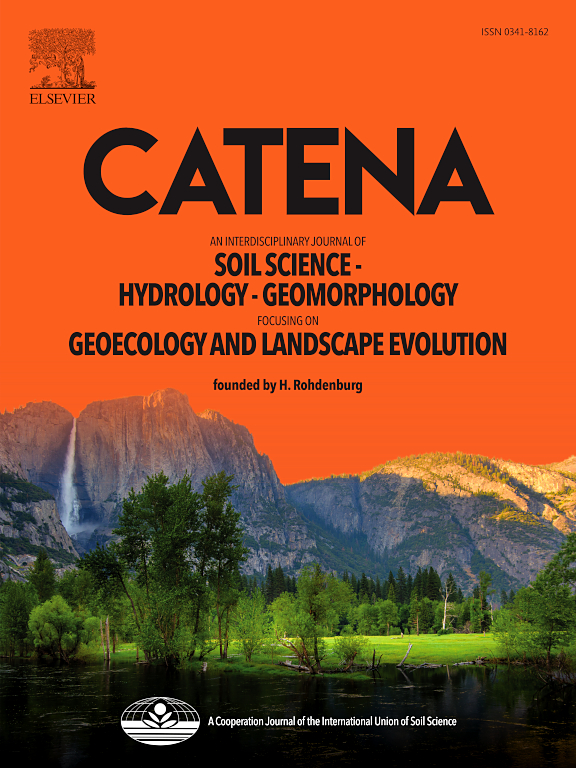Rees spatial distribution of dune sands reveals differences of regional surface processes in the Taklamakan desert
IF 5.4
1区 农林科学
Q1 GEOSCIENCES, MULTIDISCIPLINARY
引用次数: 0
Abstract
The spatial heterogeneity of the sediment composition is a crucial aspect in desert research due to variations in factors such as the provenance, weathering, and transport. The Taklamakan Desert, which is the world’s second largest mobile dune desert, presents an opportunity to investigate the spatial differentiation of the material composition of dune sand and its underlying factors. However, previous studies have been limited by inadequate methodologies and restricted sample distributions. Utilizing rare earth elements (REEs) as effective tracers of sediment sources and surface processes can offer a novel perspective on addressing these knowledge gaps. In this study, we collected 109 dune sand samples (125–250 μm) with a uniform spatial distribution from the desert for rare earth element analysis. We found that (1) the total REEs concentrations, differentiation between the light are earth elements (LREEs) and the heavy rare earth elements (HREEs), LREEs differentiation, and HREEs differentiation of the dune sands in the desert gradually increase from east to west. (2) The dune sands from the western region of the desert exhibit negative Eu anomalies, while those from the eastern region of the desert mainly exhibit positive Eu anomalies. (3) The presence of groundwater in the different desert regions can potentially influence the weathering process of the desert sand under high evaporation conditions. (4) The regional differences in the REE compositions of the Taklamakan Desert sands are influenced by the spatial differences in the local wind conditions and hydrological conditions, which may reflect the difference in the uplift of the Tibetan Plateau and the Tianshan Mountains.
求助全文
约1分钟内获得全文
求助全文
来源期刊

Catena
环境科学-地球科学综合
CiteScore
10.50
自引率
9.70%
发文量
816
审稿时长
54 days
期刊介绍:
Catena publishes papers describing original field and laboratory investigations and reviews on geoecology and landscape evolution with emphasis on interdisciplinary aspects of soil science, hydrology and geomorphology. It aims to disseminate new knowledge and foster better understanding of the physical environment, of evolutionary sequences that have resulted in past and current landscapes, and of the natural processes that are likely to determine the fate of our terrestrial environment.
Papers within any one of the above topics are welcome provided they are of sufficiently wide interest and relevance.
 求助内容:
求助内容: 应助结果提醒方式:
应助结果提醒方式:


